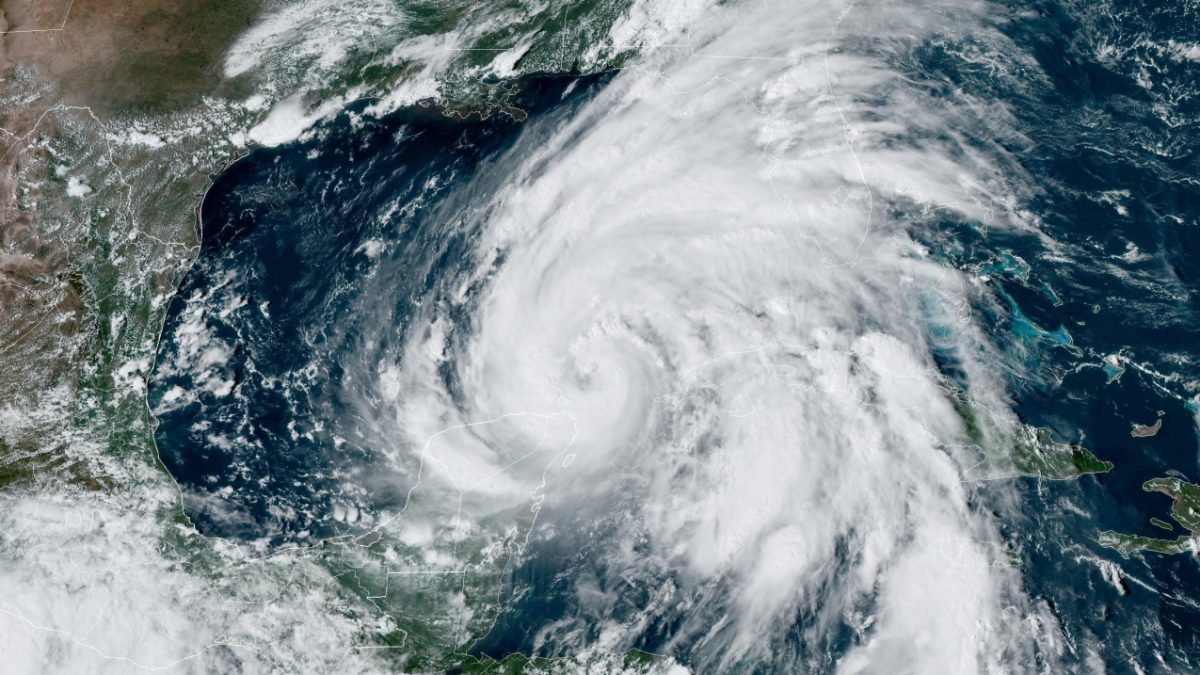Hurricane Helene, a swift Category 4 hurricane, has caused irreparable damage to towns primarily throughout The Southeastern United States.
The Category 5 Hurricane Milton formed in the Gulf of Mexico on Oct. 5 and threatens to make landfall on Florida’s Gulf Coast with potentially even greater destructive force than Helene.
The National Hurricane Center identified Helene on Sept. 23 and designated it as a hurricane on Sept. 25. Helene continued to rapidly gain strength before making landfall on Florida’s Gulf Coast on Sept. 26. The aftermath within the impacted areas — concentrated in the likes of Florida, Georgia and North Carolina — is still ongoing.
Although Helene did not hit some parts of the affected states as hard as it did others, students from these areas were struck with the possibility of damages to their homes.
Greta Kjellquist, Fordham College at Lincoln Center (FCLC) ’25, is from Asheville, North Carolina — one of the most heavily hit areas. Although she was in New York City during the storm, her family had evacuated alongside many of her hometown’s residents.
“I actually wasn’t aware anything serious was happening until cell service was lost and by that point it had made it on the news,” Kjellquist wrote. “It took a few days for the reality of things to sink in.”
Although Helene did not hit some parts of the affected states as hard as it did others, students from these areas were struck with the possibility of damages to their homes.
Elliana Burkett, FCLC ’26, is from Port St. Joe, Florida. Her hometown was originally in Helene’s path, but the hurricane changed direction before causing extreme damage. Burkett said her response to the trajectory was shaped by having previously endured serious storms.
Some in the impacted areas are still without power, making communication challenging and isolating some people seeking aid.
“I’ve experienced a strong hurricane like Helene with a direct impact and so having that last experience definitely influenced how I was reacting to the projections of Helene and contributed to the stress and constant refreshing of news and weather apps,” Burkett said.
Some in the impacted areas are still without power, making communication challenging and isolating some people seeking aid.
“It wasn’t until I was able to talk to my family on the phone that I understood the extent of the damage,” Kjellquist wrote.
Over 200 fatalities across six states, with many people still unaccounted for, have been attributed to Helene. Helene is the third deadliest hurricane to make landfall on the U.S. mainland since 2000 after Katrina in 2005 and Maria in 2017.
Fordham’s Office of Campus Ministry sent an email to the student body regarding Helene on Sept. 30. The message, which called for prayers for the affected families, directed students to on-campus resources for students.
Donations help these areas rebuild their communities. Kjellquist wrote that one of her biggest concerns was also one of the most essential: water.
“I believe all of you join with me in praying for those who died in the storm, for their loved ones, and for all the people whose homes were damaged or destroyed. And if you are able, please consider giving to the relief organization of your choice,” read the email.
Donations help these areas rebuild their communities. Kjellquist wrote that one of her biggest concerns was also one of the most essential: water.
“Our city already had really old pipes so the entire system was destroyed,” Kjellquist wrote. “Most people that evacuated, like my family, won’t return until there is running water.”
She also expressed a feeling of unease for children in local schools and the priority of their education during this time.
For Kjellquist, she wrote that the length of the recovery process seems strange and unpredictable.
“It’s like if Covid had hit just one city and its surrounding towns — it threw off the entire year for these kids but not the rest of the kids around the country,” Kjellquist wrote.
Amidst the aftermath of damages caused by the hurricane, Burkett said she was most concerned about the relief strategies that will be needed going forward.
“I think my biggest concern about the relief process is that most people who were not directly affected will forget about or move on from helping with the relief process in a matter of weeks,” Burkett said. “Recovery is a very long process and help is needed in these areas for not just days or weeks but months and maybe even years.”
For Kjellquist, she wrote that the length of the recovery process seems strange and unpredictable.
“It’s odd not knowing when/if I’ll go home again,” Kjellquist wrote.
Several non-profit organizations have offered to help local communities with a variety of services and donation efforts.
The American Red Cross is one of the organizations providing emergency relief to those impacted by the storms. They provide resources and information for survivors, reunification teams to locate missing people and provide support for storm victims.
All Hearts and Hands, a volunteer-based disaster relief program, is launching a 12-month program dedicated to relief efforts for Helene. Their website provided live updates tracking the storm and a section for donations and volunteers.
While relief efforts for Helene are ongoing, Florida has issued evacuation orders for residents on the Gulf Coast ahead of Hurricane Milton. As the east is still struggling to clear debris from Helene, Burkett said that she is concerned as a Florida resident.
“Having experienced a Category 5 hurricane a few years ago I think I kind of have an idea of exactly what a hurricane like Milton can do to all of these areas in Florida … that does make me very nervous and also just sad for Floridians in the impact zone,” Burkett said.
At the time of publication, Hurricane Milton has not yet made landfall.


